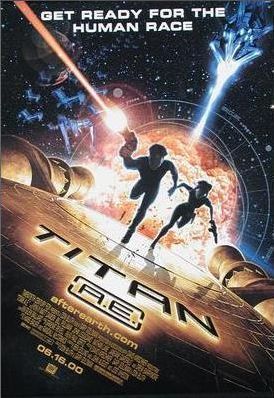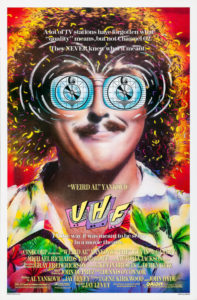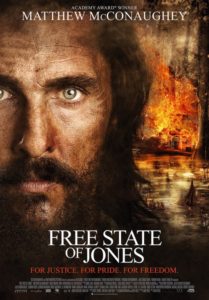Spoiler Warning: This review goes into plot details and specifics of the film. If you haven’t seen this film and want to, proceed with caution.
Since I’ve begun this Summer Blockbusters that Weren’t project, I’ve looked at a decent variety of films. I’ve seen some good movies, and a bit of crap. To my knowledge, however, I have not reviewed a film that could be blamed for the destruction of an entire studio. Today’s entry, Titan A.E, is special in that regard. Released in 2000, Titan A.E. was a monumental failure at the box office, losing up to $100 million according to some sources. That would suck at even the best of times, but it’s particularly harmful when your studio is so young that it completely wipes it out. That was the case for Fox Animation Studios, 20th Century Fox’s attempt to compete with the Disney machine that was riding high during its Renaissance. Titan A.E. was only the third film produced under the banner, after Anastasia and its direct-to-video sequel, Bartok the Magnificent. It was also the last, with the studio being shut down almost immediately after the film’s release.
The effect Titan A.E. had on FAS’ closure may get overstated at times. In truth, they had been struggling since inception, with a majority of layoffs coming months before the film even came out. Also, pretty much all non-Disney animation was failing at the time, scaring most studio’s from putting a lot of time or money towards those films. The history of this film’s production is quite long and complicated, but is gone over in more detail at SF Debris.
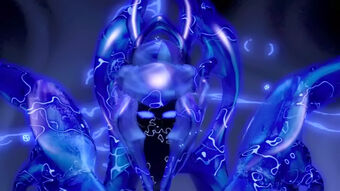
Perhaps more tragically, at least for animation buffs, is that Titan A.E. is the final feature film to date for director Don Bluth. A pioneer for the field of animation, Bluth made a name for himself in the 1980s after leaving Disney with films like The Secret of Nimh, An American Tale, and The Land Before Time. After a few flops in the 90s, he decided to accept the offer to head Fox’s new animation department. Unfortunately, his mainstream career died with FAS. Since then, Titan A.E. has been reevaluated to an extent, with some seeing it as an overlooked masterpiece. While there is a lot to admire about it, the film’s tumultuous production shows itself on screen, and the story and characters leave something to be desired.
I should note I’m probably looking at Titan A.E. from a somewhat biased perspective. I was ten years old when it was released to theaters, and this film, or at least the marketing for it, hit me right in that sweet spot. I wasn’t old enough to go see the big disaster epics that were in vogue around this time, and having one aimed at my age group was kind of exciting. The mysterious and haunting teaser that played before The Phantom Menace hooked me, and I still remember the trailers with that song “Higher” by Creed, the poor man’s Nickelback themselves. I even had the crappy soundtrack filled with music my stupid preteen self liked for some reason (no Creed on that though). Alas, I didn’t see the movie in theaters, so my disappointment was saved for VHS.
The film starts with a hell of a premise. 90s blockbusters were all about destroying different parts of the world, but eventually mankind, or at least America, would prevail against whatever existential threat came knocking. Titan A.E. instead asks the question “What would happen if the invading aliens won?” Better yet, these aliens, energy beings known as “The Drej” win in the prologue, blowing up the Earth in quick enough fashion to make the Empire jealous, as well as any humans unlucky enough to still be in range. The destruction is among the film’s best features. It’s beautifully rendered, showing off the state of the art CGI animation. The problem with this movie is what lies around this sequence. We see little of this Earth of the year 3028, and what we do see is so generic it could be any other planet. While they show some of the chaos around the evacuation, the emotional component is missing. The disaffected voice acting doesn’t help. As the destruction begins, the main character is more focused on the titular ship, the Titan, which is carrying his father. While this would naturally worry him, the film doesn’t show his or anyone else’s reactions to the aftermath, cutting away to the main title when holding onto the humanity this movie is supposedly about for a moment would’ve drawn more of a connection. Bluth usually excelled at tragic emotion, so the failure of Titan A.E. to do so is odd.
The Drej’s motivations are eventually explained with some typical “we are the best species” crap about how they’re afraid of what humanity will become if left unchecked. The implication is that our limitless intelligence and imagination (and opposable thumbs, of course) will threaten their hold on the universe. There is perhaps some irony, then, that the rest of the story is so cliched and predictable. A truly imaginative story could’ve been told about how the human race struggled after losing their home, and how they’ve been brought to the brink of extinction, drifting across the galaxy. But forget about that. Instead, it cuts to fifteen years later. Our lead has grown up to be a generic guy named Cale Tucker (Matt Damon), who, in what must be a sign of how rushed production was, looks a lot like Dmitri from Anastasia. He was raised amongst aliens by his father’s friend, an alien named Tek (Tone Loc), and doesn’t much care for his fellow humans, or anyone really. He’s supposed to be angry that his father supposedly abandoned him, but he comes off as a selfish jerk. A good protagonist should be flawed, sure, but his flaws fail to make him compelling, and his development doesn’t happen for some time. He turns out to be in possession of a map to the Titan, the macguffin of the movie, and he becomes a pinball protagonist for the first half, only around because others need the map.
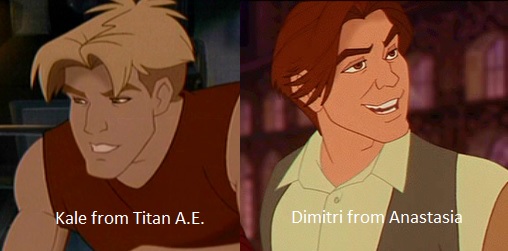
The rest of the film follows a predictable formula. Another friend of Cale’s father, Captain Korso (Bill Pullman), recruits Cale into his crew of gimmicky aliens named Preed (Nathan Lane), Gune (John Leguizamo), and Stith (Janeane Garofalo). There’s a love interest named Akima, and it’s cool that they made one of the leads a woman of Asian descent, showing the scale of the conflict and allowing for some diversity, and had her voiced by…Drew Barrymore? Was Ming-Na Wen unavailable?
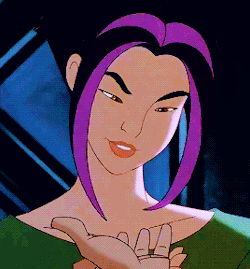
Anyway, they go to a place, get the map translated by some owl-like aliens called the Gaoul, the Drej attack, they escape. Cale starts fighting for more than just himself, Korso and Preed turn out to be traitors, Cale and Akima escape, there’s a race to the Titan, and a final battle with the Drej where Korso makes a heel-face turn and sacrifices himself. The Titan turns out to be the Genesis project from Wrath of Khan on steroids and creates a new Earth. Cale and Akima fall in love, humanity is saved, the end.
One of the keys to a successful sci-fi story is worldbuilding. One should get a sense of the universe characters occupy, the different species and rules, and just the general idea of how things work. Titan A.E. has some of that. The settings are unique and feel lived in. Different alien species are seen throughout, with each given a unique look. Another strength of Bluth’s was his willingness to design characters to be ugly, or at least less cute than his counterparts. When he made a movie, he wasn’t focused on how many stuffed animals he could sell. Humans are seen as third class citizens in this new reality, and it is shown effectively with them getting served last at lunch, and the food not being exactly catered toward them. Late in the film, there is a short scene with some other humans who tell Cale how much they miss Earth and show how much a new home could mean, getting what’s at stake across. Finally, a cat & mouse sequence through an ice field is arguably the most creative set piece, with each ship having to navigate around reflections, using intelligence and strategy.
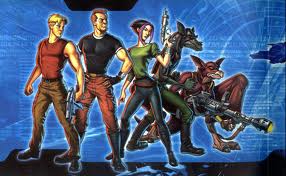
Unfortunately, the rest of the worldbuilding doesn’t measure up. The Gaoul only appear once, and are quickly forgotten, their willingness to lay down their lives for humanity unexplained. Their world is filled with hydrogen trees which, outside of being an obstacle for a nifty chase sequence, I can’t imagine the purpose of. A large section has Cale and Akima captured by the Drej, which could’ve been an opportunity for plot and character development. Instead, it’s completely squandered. Nothing is learned about the Drej, other than the fact that their security is shit. The Drej Queen is never confronted, and remains a device to shout vague orders at her soldiers. This entire portion of the film is padding, though there is a funny scene where the crew runs into a surprisingly astute guard while rescuing Akima, who has already taken care of herself. I’d bet this was one of Joss Whedon’s contributions to the script.
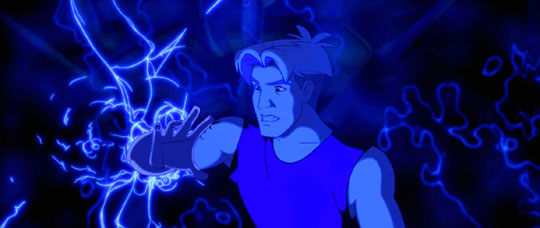
The characters are a mixed bag. Cale and Akima come off the worst, with bland characterizations that feel copy and pasted from other hero’s journey stories. This may have been more forgivable with different actors, but Damon gives maybe the laziest vocal performance in the history of animated movies, while Barrymore is completely miscast, her Valley Girl inflections failing to bring life to the character. The crew is better. Gune is an eccentric inventor, and Leguizamo does his usual act, but his wide-eyed sincerity is infectious. Stith is a kangaroo-like weapons expert who unfortunately doesn’t get much to do, but Garofalo is lively and tough. As the slimy and traitorous Preed, Lane does a great job playing against type. There’s little sign of Timon in his performance.
Korso is the most interesting member of the crew. His betrayal of the cause he recruited Cale into is an easy plot twist, but it shows layers to his character. He claims that the Drej can’t be beaten because they’re “pure energy,” implying that he’s spent the last fifteen years fighting and failing, and has simply lost all hope. Cale’s father is revealed to have been dead for years, which may have helped push him over the edge. Cale and Akima catch up to his ship in the final race for the Titan, despite having at least a few days head start, suggesting that he may be subconsciously sabotaging himself, unwilling to give up that last shred of hope for the human race. This interpretation is undermined by his abusive treatment toward Gune and Stith, but it shows the potential this film could’ve lived up to with perhaps more time in the planning stages. Pullman also does fine work subverting his agreeable persona. However, a small problem is the superfluous Tek character. He raised Cale, but disappears from the movie as soon as Korso appears, and he’s never brought up again. Supposedly he sacrifices himself, though it’s offscreen. It may have been to show how important Cale and the Titan are, but again, that emotion is lost. A rewrite could have combined the Tek and Korso characters, which may have made Cale’s relationship with him, and his eventual betrayal, more heartbreaking.
I briefly mentioned the animation before, but it beautifully done for the most part, especially for its time. Titan A.E. was made with a mix of CGI for backgrounds and settings, and 2-D hand drawn artistry for the characters populating them. Each style is well designed and detailed. Together, however, they clash. The pristine appearance of the Drej doesn’t match the others, but it works to symbolize their otherworldly evil. It’s when the cast interacts with the various planets and space stations that it becomes distracting. They don’t feel like they inhabit the same world. At times, the people appear weightless, as if they’re standing on nothing. As for the music, well, Graeme Revell’s score is undermined by the inclusion of alt-rock and pop artists, such as Lit and The Urge. The songs aren’t so bad on their own, but they’re intrusively placed throughout the film and distance you from the story. It comes across as cynically marketing merchandise rather than a creative decision.
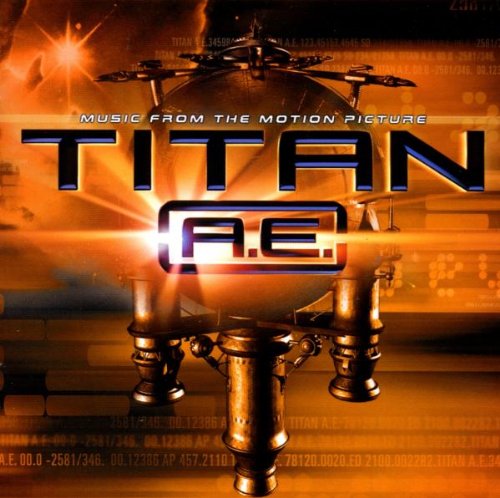
Titan A.E. has the opposite problem The Black Cauldron had. While that film seemed like a children’s film tinkered with to appeal to teens, Titan seems to have started with an older audience in mind, then toned down at the last minute so children could see it. There are glimpses of more mature content, such as brief nudity, surprisingly graphic deaths, a neck gets broken, as well as other scary stuff. Yet, random characters die offscreen for no apparent reason, juvenile humor keeps things from getting too intense, and the script feels like it was chopped up to remove more PG-13 moments. It’s no surprise that this was initially pitched as a live-action film, and it may have worked better that way, without the unjustified stigma of animation as “kid’s stuff.” Most of what’s here could have been done in the other medium, and animation is, after all, meant for things that can’t be done in live-action.
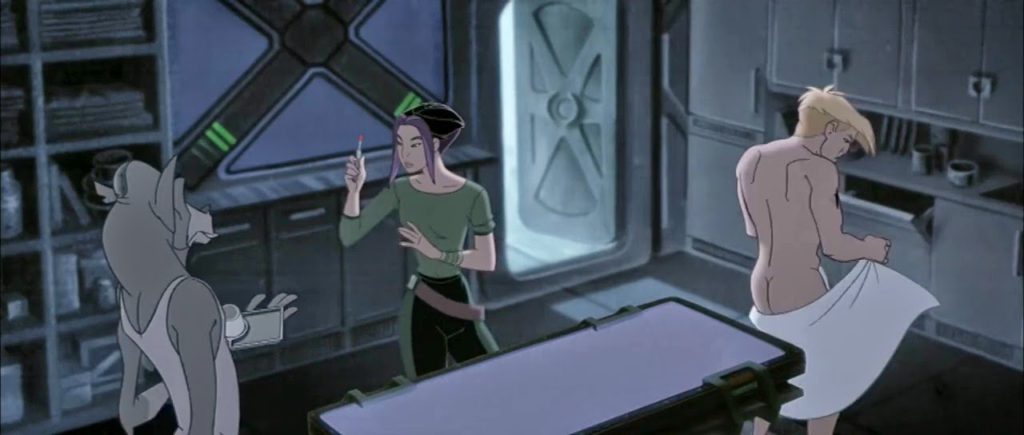
The conflict is resolved when the heroes use the Drej’s own energy to power up the Titan and create New Earth (or Planet Bob if you will), destroying their enemies in the process. It’s a decent way to resolve things, with the villain’s fear becoming a self-fulfilling prophecy. It does, however, raise the question of what would’ve happened if the Titan worked perfectly on it’s own. Had they created a new world and the Drej were still out there, they would have just destroyed this planet too! It’s a minor nitpick, but it’s an example of this film’s flaws. Not enough time or thought was put into the plot or the structure. Had more time been put into internal logic, worldbuilding, and characterizations, the film may have become a true classic, rather than a cult classic.
GRADE: C+
I have a bit of nostalgia for Titan A.E, but that can’t mask its problems. There are imaginative ideas and designs here, and at times it’s visually breathtaking. But it’s uneven, uncertain of its audience, and ultimately fails to reach its potential. It can be a satisfying experience for audiences in that age when they’re too old for Snow White, but too young for R rated action flicks, however. It’s not bad, but it could have been more. Maybe one day, someone will adapt the story into the epic it desired to be.

